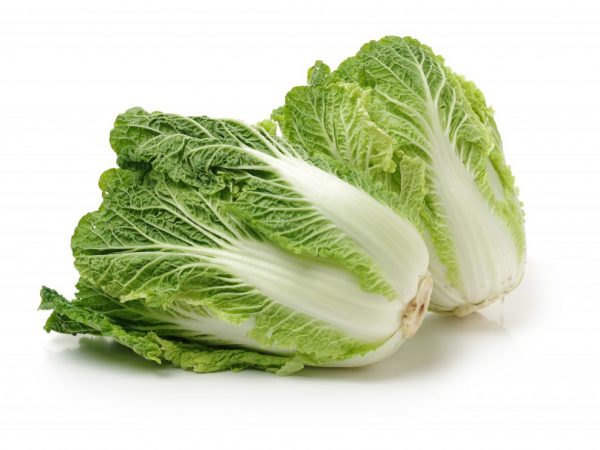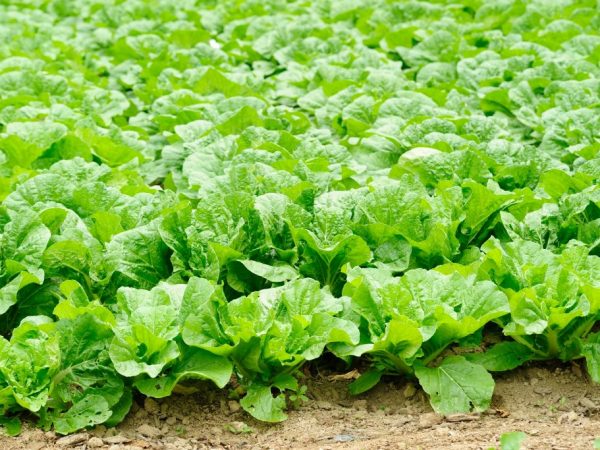Characteristics of Peking cabbage variety Bilko F1
Peking cabbage Bilko F1 is appreciated by gardeners for its unpretentiousness. The plant feels great in the beds in all regions of the middle zone, and also grows in the conditions of the short Siberian summer.

Characteristics of Peking cabbage variety Bilko F1
Characteristics of the variety
Peking cabbage of the Bilko F1 variety is a mid-season hybrid capable of producing crops both in regions with a warm climate and regions with a short summer. The ripening period of the culture is 70 days from the moment the first leaves appear. Sowing is carried out from the end of January (for early harvest) and no later than the end of March (for a late harvest). The vegetable is undemanding to the length of daylight hours, however, a later seeding does not guarantee the desired yield.
The vegetable can be grown both in open beds and in a combined greenhouse. For those who decide to get a crop out of season, it is recommended to highlight the plants. This is done using specialized phytolamps.
Bilko Peking cabbage is grown in a seedling and non-seedling way. Seedlings that have not undergone picking and transplanting can yield a crop after 60 days after germination. Plants need watering and protection from temperature extremes. An important condition for obtaining a decent amount of product is to avoid thickening of the plantings. For 1 sq. m planted no more than 6 plants.
Description of the head
Peking cabbage Bilko F1 differs from forks of any other variety or hybrid in the shape of the leaves and their color. The seedlings of the plant have an external resemblance to the Savoyard variety of the vegetable, but the leaves of the Peking are much thinner and more tender. The ripe fruit looks like a barrel. When squeezing a head of cabbage, a characteristic crunch is heard.
Fork Peking Bilko, belonging to the Dutch selection, is of medium density. The length of the stalk is average, but in comparison with the size of the fruit itself, it is almost invisible. The height of a head of cabbage can reach 30 cm. A ripe vegetable has a dark yellow color in cross section, but the outer leaves still remain dark green.
The maximum weight of one head of cabbage reaches 2 kg. The keeping quality of the vegetable is average, but in the refrigerator the product can be stored cut for 3 weeks without losing its taste. It is suitable for long-term transportation.
The taste of this Asian vegetable is completely bitter. Also, it does not have a pronounced aroma inherent in many fruits of this family.
Application of the vegetable
Peking has long been a favorite food for culinary experts. Delicate leaves are good in any version, but the vegetable is famous not only for its taste, it is full of minerals and vitamins.
Bilko cabbage is used for cooking:
- salads;
- casseroles;
- stuffed cabbage.
Vegetables in the marinade are very tasty, as well as leaves fried in breadcrumbs or deep-fried. Preparations for the winter are prepared from it: fermented, salted and canned.
The vegetable can be fried or simmered in a skillet without oil, and then used to make stews, fillings in pies and pies, dumplings or muffins.
Dishes made from this vegetable are very healthy. Treats are advised to be consumed by people suffering from:
- obesity;
- vitamin deficiency;
- hypertension;
- constipation;
- fluid retention in the body.
Asian vegetable dishes are useful for anemia and disorders of the liver and spleen. Peking cabbage of the Bilko variety is not recommended for people with problems of the gastrointestinal tract: pancreatitis, ulcers and gastritis, high acidity of gastric juice.
Care

Caring for cabbage is easy
Peking Bilko variety is unpretentious in care. Subject to the rules of growing from 1 sq. m collect up to 7 kg of fruit.
Caring for Bilko cabbage consists of:
- selection and preparation of a site for growing seedlings;
- cultivation of seedlings in compliance with the requirements for lighting and humidity in the room;
- disembarking to a permanent place;
- treatment against pests and diseases.
The soil
The plot for growing seedlings should have a nutritious soil with a predominant nitrogen content. The best predecessors of Peking are the crops of the nightshade family, as well as cucumbers and zucchini.
Formation
Peking seedlings are transplanted when the plant forms forks, and the air temperature does not drop below 15 ° C at night. Planting seedlings of an Asian vegetable is performed in the same way as planting seedlings of ordinary cabbage.
Top dressing
During the growth of plants and the formation of heads of cabbage, the soil in the beds is enriched with wood ash. During the period of formation, seedlings do not need other fertilizers, because the fruits are able to accumulate all substances in themselves.
Watering
At all stages of cultivation, the plant requires high humidity, so it is recommended to mulch the aisles. Watering plants is carried out as needed, but it is impossible to allow the soil to dry out at the base of the culture.
Pests and diseases
Peking cabbage variety Bilko F1 is resistant to fusarium, keel, downy mildew, but very attractive to insects.
It is impossible to use pesticides to treat the beds, therefore, extremely gentle methods are used to combat. The main ingredients of pest repellant mixtures are foods and spices:
- salt;
- infusion of black ground pepper;
- mustard seed powder;
- ground red pepper.
All loose substances are scattered in the aisles over mulch, the plants are sprayed with an aqueous agent based on ground pepper. Slugs and snails are prevented with ash. Parasites that are not afraid of treatments should be collected by hand and then exterminated. These manipulations save the harvest.
Conclusion
Anyone who has already grown this vegetable is pleased with the Bilko F1 Peking cabbage. The plant has an impressive head size. Dishes made from Peking cabbage are distinguished by their delicate taste and aroma.


